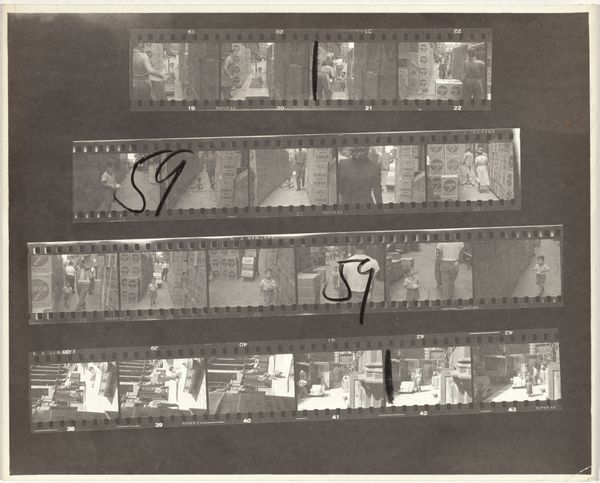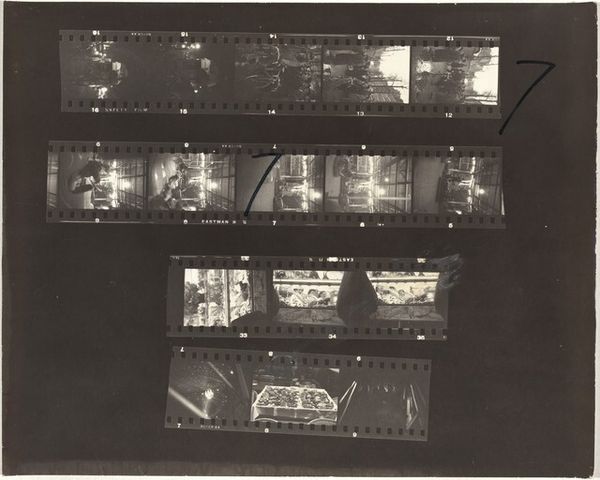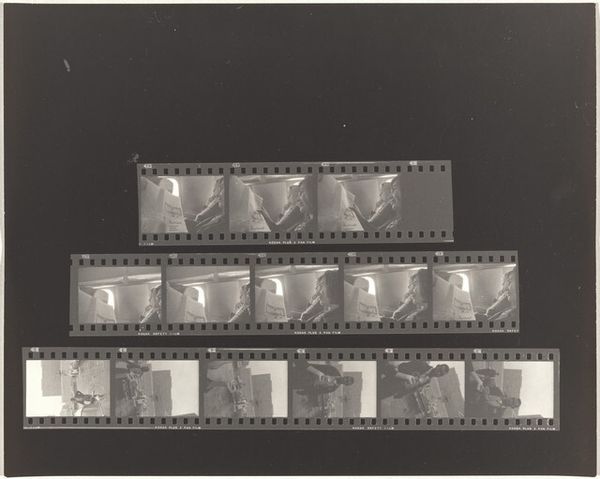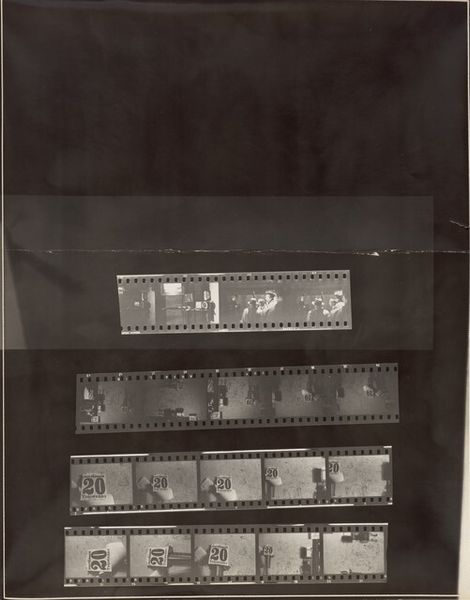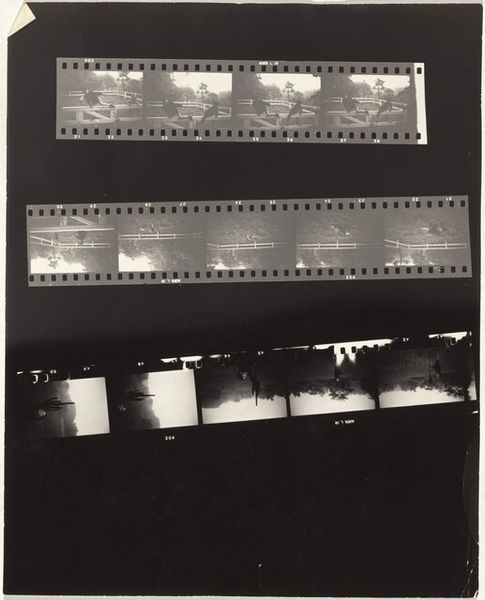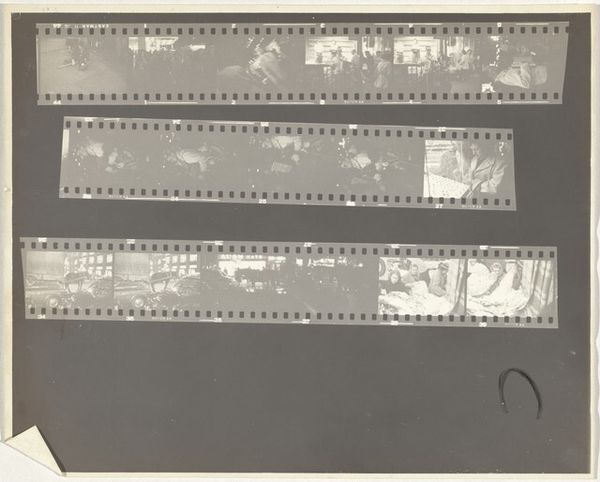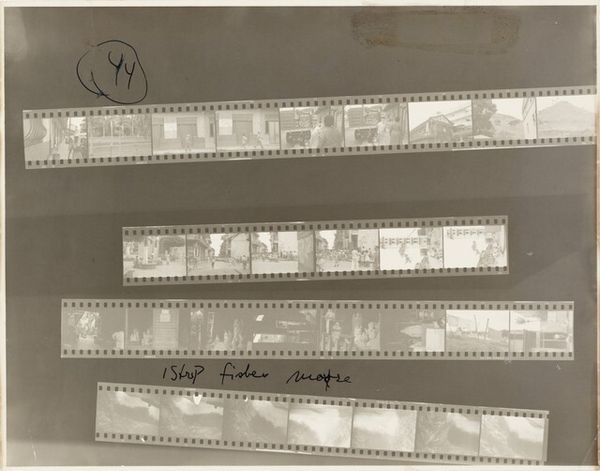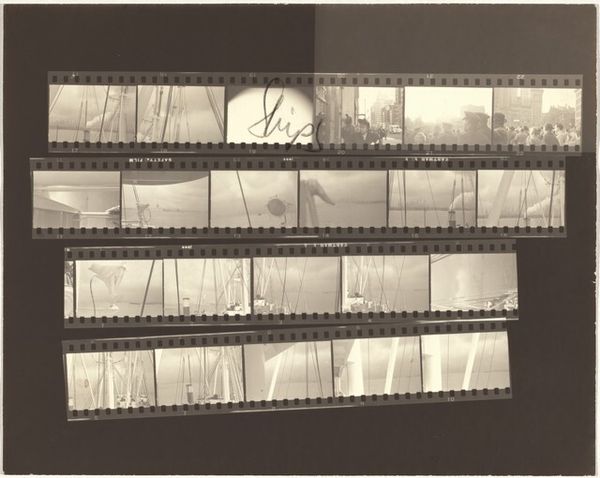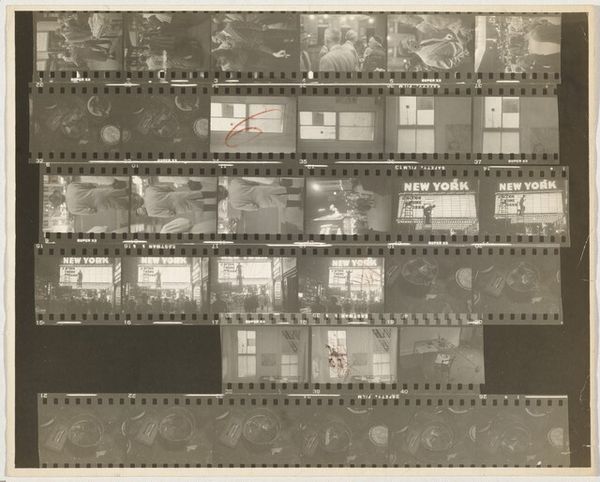
print, photography, gelatin-silver-print
#
portrait
#
print photography
#
film photography
# print
#
street-photography
#
photography
#
gelatin-silver-print
Dimensions: overall: 20.2 x 25.2 cm (7 15/16 x 9 15/16 in.)
Copyright: National Gallery of Art: CC0 1.0
Curator: At first glance, I see what looks like discarded film strips—fragments of images layered in monochrome. There's a haunting quality to this rawness. Editor: Today we will discuss “Wales 47,” a gelatin silver print created by Robert Frank in 1953. The piece comprises several strips of film negative. Curator: The layering presents an almost cinematic narrative, even though we’re dealing with still images. The starkness of the black and white emphasizes form and shadow. Notice how each individual frame teases a story. Editor: Indeed. What we observe here is an arrangement that seems both accidental and carefully structured. Frank’s process, particularly the editing stage, played a crucial role in shaping perceptions and interpretations of the scenes. There’s a tension between spontaneity and control here. Curator: Looking closer, there's also a thematic contrast between each set of frames—there is some food displayed rather prominently on top of images portraying people. Editor: Frank sought to capture life as it was experienced, diverging from established documentary norms. The rawness in his prints, the sometimes harsh contrasts, served a purpose. He presents the reality of a society marked by inequalities. Curator: So, the imperfections become crucial to the impact. The arrangement encourages me to consider what has been included, but also excluded. What might he have intentionally left on the cutting room floor, and what significance might that carry? Editor: Absolutely. In the context of the 1950s, this type of street photography challenged idealized representations and instead depicted more grounded scenes of everyday existence. Robert Frank gave prominence to realities not typically portrayed by mainstream media. Curator: This discussion has enhanced my appreciation for the tension and layers that Frank explores within “Wales 47." Editor: I hope listeners also understand the way in which Robert Frank provided an aesthetic framework and also a stark political observation about mid-century Wales.
Comments
No comments
Be the first to comment and join the conversation on the ultimate creative platform.
